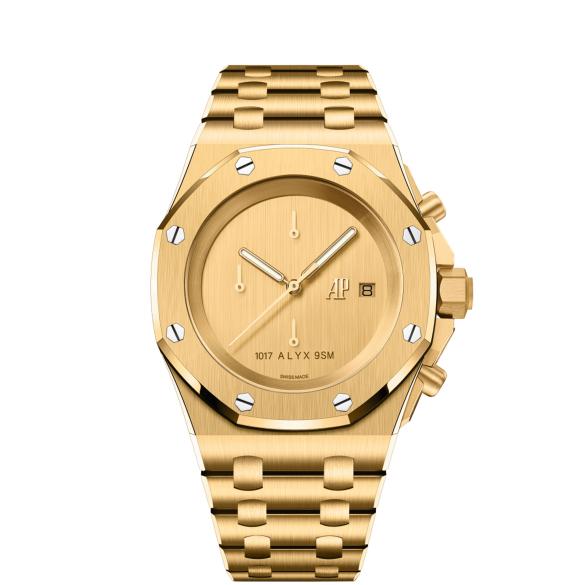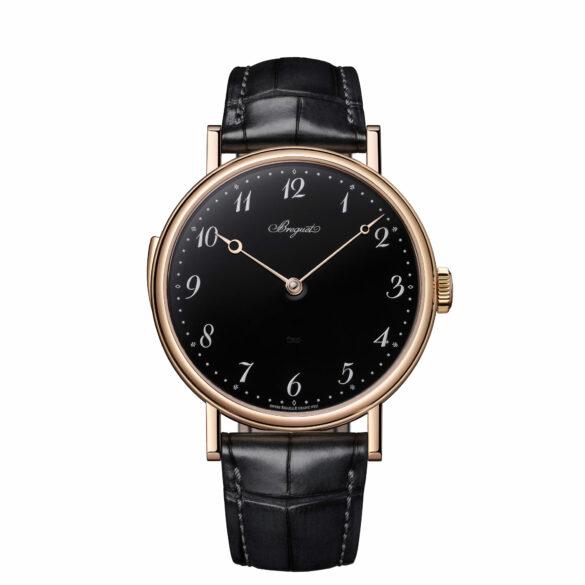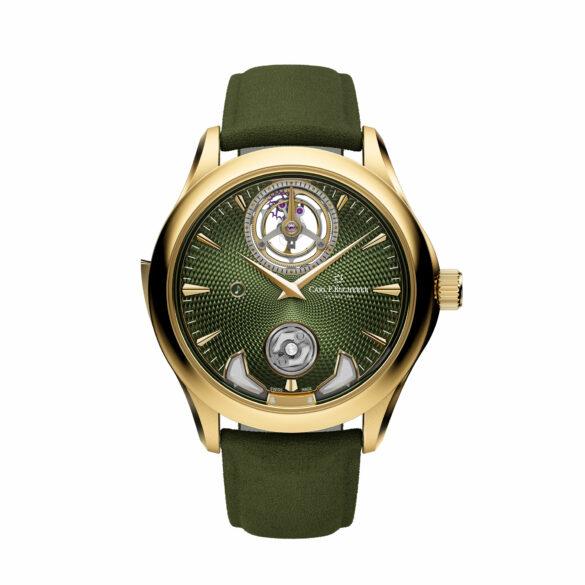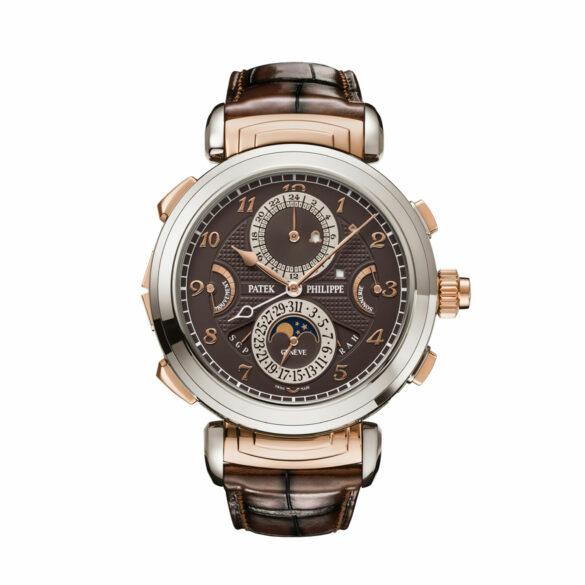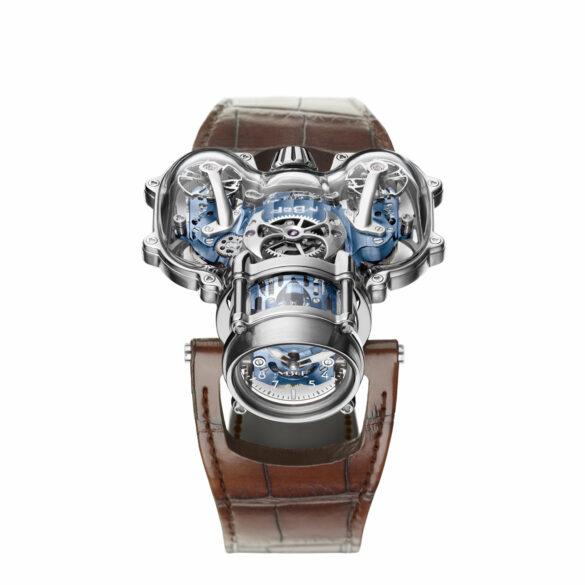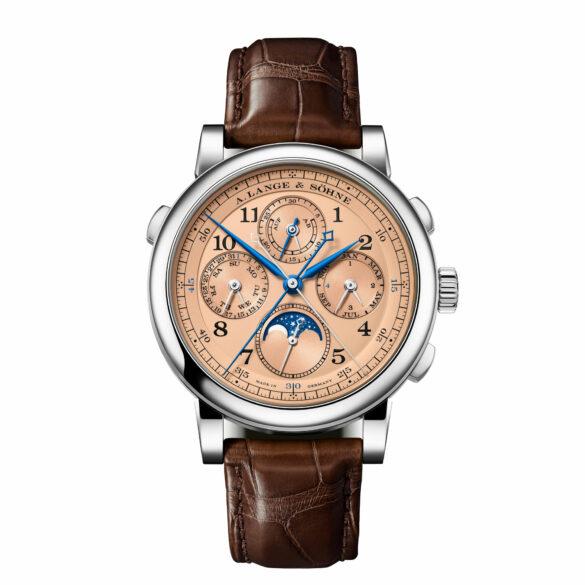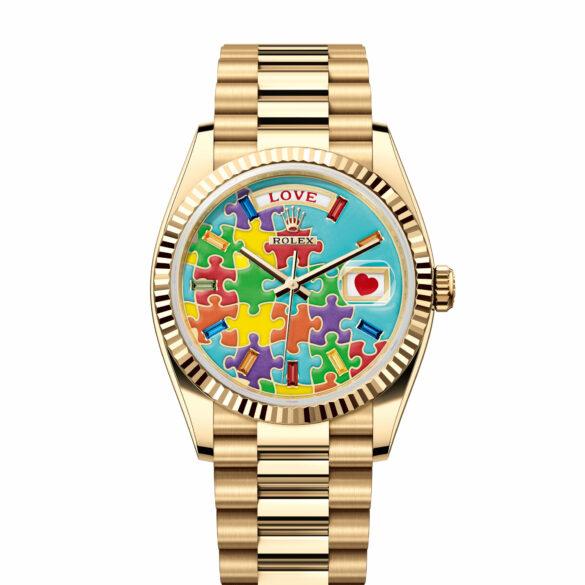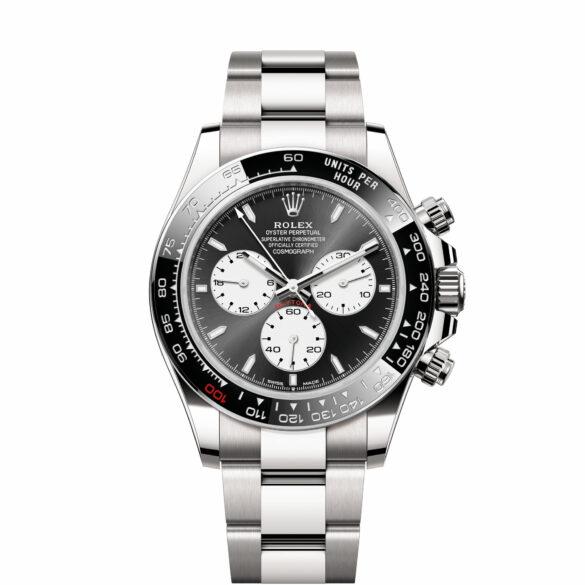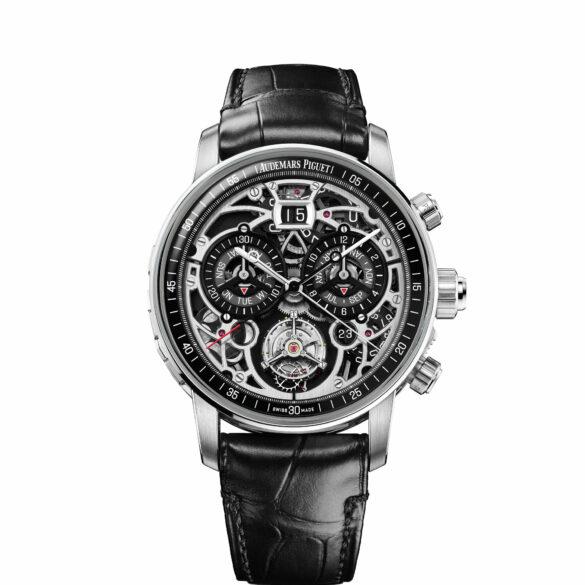The Audemars Piguet Royal Oak Offshore Selfwinding Chronograph 42 mm x 1017 ALYX 9SM is also by Mathew Williams: plain and gold
White gold
White gold is a popular alloy used in jewelry that has a silvery-white appearance, resembling the look of platinum. It is typically made by combining gold with one or more white metals, such as nickel, palladium, or silver. The addition of these white metals gives gold a whiter color compared to its natural yellow state.
.
The most common alloy used for white gold is a combination of gold with nickel or palladium. Additionally, rhodium, a shiny, reflective metal, is often plated onto white gold jewelry to enhance its appearance and provide extra durability. Rhodium plating gives white gold a bright, reflective surface and helps protect the underlying metal from scratches and tarnish.
.
White gold and rhodium plating are not friends
.
It’s important to note that the natural color of gold is yellow, and the term “white gold” refers to the color achieved through alloying rather than the existence of a naturally occurring white gold. The specific alloy composition can vary, and the choice of metals depends on factors such as desired color, durability, and any potential allergies or sensitivities.
.
Consumers should be aware that rhodium plating on white gold jewelry may wear off over time, revealing the underlying metal’s true color. Periodic re-plating may be necessary to maintain the bright white appearance. Additionally, some people may be allergic to nickel, so nickel-free white gold alloys are available to address this concern.
.
Hardness of white gold
.
The hardness of white gold can be higher than regular gold due to the alloying metals. It often is ranging from about 150 to 250 HV, depending on the specific composition while 18k or 14k gold does 120 to 200 HV.
.
Compare case materials on the Hardness Vickers scale (from hard to hardest):
.
| Carbon | 20-50 HV |
| Platinum | 40 HV (950 platinum: 80-135 HV) |
| Silver | 70-90 HV |
| Bronze | 60-150 HV (100-200 HV treated) |
| Aluminium | 120-200 HV |
| Gold | 120-200 HV (18k or 14k) |
| Palladium | 150-200 HV |
| White gold | 150-250 HV |
| Stainless steel | 150-250 HV (special 1200 HV) |
| Titanium | 150-200 HV (grade 2) / 300-400 HV (grade 5) |
| Ceramic | 1200-1400 HV (1500-2000 for alumina) |
| Sapphire | 2000-2300 HV |
.
Watches from white gold
Breguet introduces a new Breguet Classique 7637 Répétition Minutes with a very plain dark dial in either blue or black
To mark its 135th anniversary, Bucherer unveils three minute repeaters: the Carl F. Bucherer Manero Minute Repeater Anniversary
The Patek Philippe Grandmaster Chime Ref. 6300GR-001 is today’s most complicated wristwatch the brand has ever produced
MB&F introduces two new models of the MB&F HM9 Sapphire Vision, also known as the MB&F HM9-SV
A. Lange & Sohne 1815 Rattrapante Perpetual Calendar White Gold
The new A. Lange & Sohne 1815 Rattrapante Perpetual Calendar White Gold is a new addition to the 1815 collection
The Rolex Oyster Perpetual Day-Date 36 Jigsaw is the most colorful Day-Date since its launch in 1956. And a bit weird maybe
The Patek Philippe 5531G-001 World Time Minute Repeater is the first Patek model to combine a world timer and a minute repeater
Not only the win of Ferrari is a surprise, so is the Rolex Daytona 100th 24 Hours of Le Mans Edition. Which has some nice details
Audemars Piguet Code 11.59 Ultra-Complication Universelle RD#4
The Audemars Piguet Code 11.59 Ultra-Complication Universelle RD#4 timepiece is all about numbers
